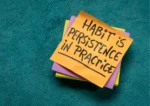Across Asia, ambitious and capable women are stepping up—but many still hesitate at the leadership table. The problem isn’t a lack of talent or ambition. It’s the silent weight of cultural norms, workplace biases, and self-doubt that keep them questioning, “Am I truly ready?” Meanwhile, businesses struggle with untapped potential, unable to fully harness the…
RELATED ARTICLES
© NewInAsia.com 2025








